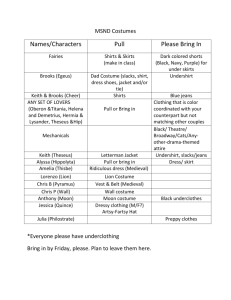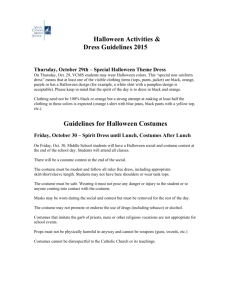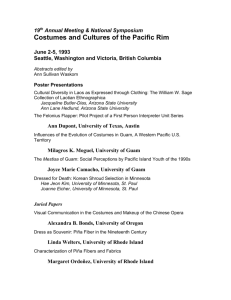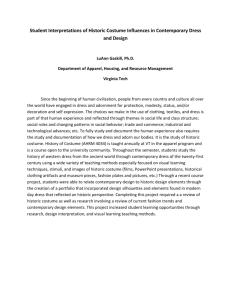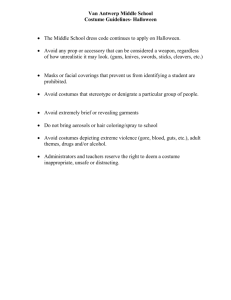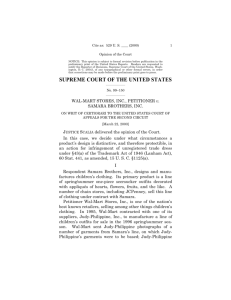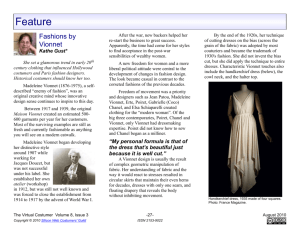Academic Costumes and Regalia
advertisement
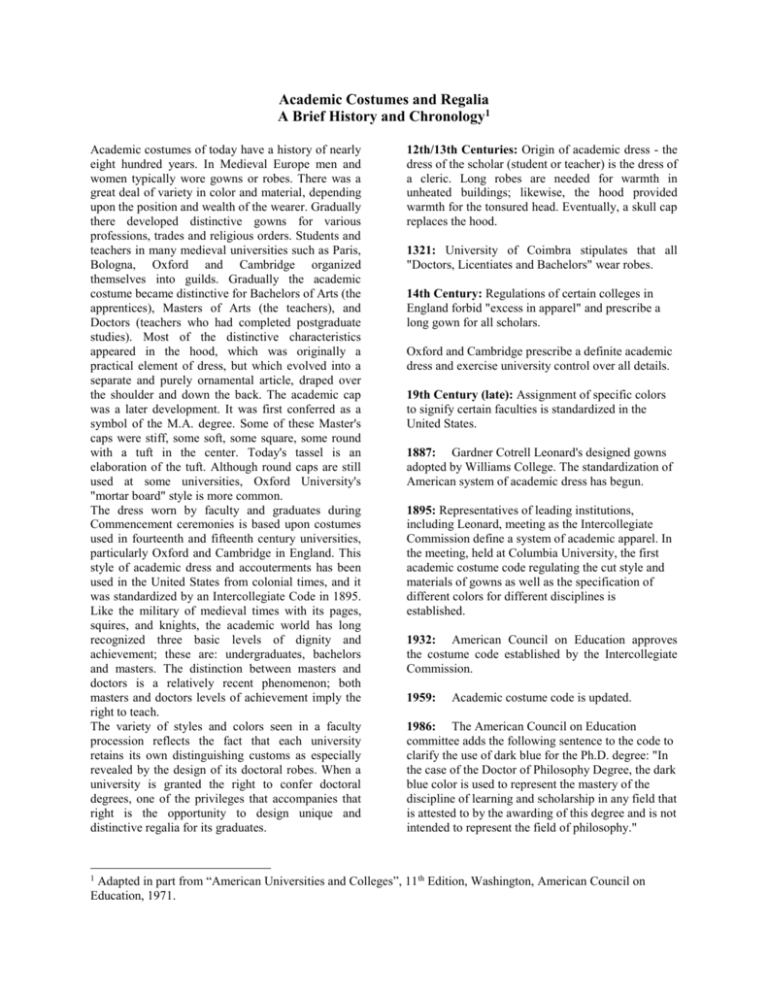
Academic Costumes and Regalia A Brief History and Chronology1 Academic costumes of today have a history of nearly eight hundred years. In Medieval Europe men and women typically wore gowns or robes. There was a great deal of variety in color and material, depending upon the position and wealth of the wearer. Gradually there developed distinctive gowns for various professions, trades and religious orders. Students and teachers in many medieval universities such as Paris, Bologna, Oxford and Cambridge organized themselves into guilds. Gradually the academic costume became distinctive for Bachelors of Arts (the apprentices), Masters of Arts (the teachers), and Doctors (teachers who had completed postgraduate studies). Most of the distinctive characteristics appeared in the hood, which was originally a practical element of dress, but which evolved into a separate and purely ornamental article, draped over the shoulder and down the back. The academic cap was a later development. It was first conferred as a symbol of the M.A. degree. Some of these Master's caps were stiff, some soft, some square, some round with a tuft in the center. Today's tassel is an elaboration of the tuft. Although round caps are still used at some universities, Oxford University's "mortar board" style is more common. The dress worn by faculty and graduates during Commencement ceremonies is based upon costumes used in fourteenth and fifteenth century universities, particularly Oxford and Cambridge in England. This style of academic dress and accouterments has been used in the United States from colonial times, and it was standardized by an Intercollegiate Code in 1895. Like the military of medieval times with its pages, squires, and knights, the academic world has long recognized three basic levels of dignity and achievement; these are: undergraduates, bachelors and masters. The distinction between masters and doctors is a relatively recent phenomenon; both masters and doctors levels of achievement imply the right to teach. The variety of styles and colors seen in a faculty procession reflects the fact that each university retains its own distinguishing customs as especially revealed by the design of its doctoral robes. When a university is granted the right to confer doctoral degrees, one of the privileges that accompanies that right is the opportunity to design unique and distinctive regalia for its graduates. 12th/13th Centuries: Origin of academic dress - the dress of the scholar (student or teacher) is the dress of a cleric. Long robes are needed for warmth in unheated buildings; likewise, the hood provided warmth for the tonsured head. Eventually, a skull cap replaces the hood. 1321: University of Coimbra stipulates that all "Doctors, Licentiates and Bachelors" wear robes. 14th Century: Regulations of certain colleges in England forbid "excess in apparel" and prescribe a long gown for all scholars. Oxford and Cambridge prescribe a definite academic dress and exercise university control over all details. 19th Century (late): Assignment of specific colors to signify certain faculties is standardized in the United States. 1887: Gardner Cotrell Leonard's designed gowns adopted by Williams College. The standardization of American system of academic dress has begun. 1895: Representatives of leading institutions, including Leonard, meeting as the Intercollegiate Commission define a system of academic apparel. In the meeting, held at Columbia University, the first academic costume code regulating the cut style and materials of gowns as well as the specification of different colors for different disciplines is established. 1932: American Council on Education approves the costume code established by the Intercollegiate Commission. 1959: Academic costume code is updated. 1986: The American Council on Education committee adds the following sentence to the code to clarify the use of dark blue for the Ph.D. degree: "In the case of the Doctor of Philosophy Degree, the dark blue color is used to represent the mastery of the discipline of learning and scholarship in any field that is attested to by the awarding of this degree and is not intended to represent the field of philosophy." Adapted in part from “American Universities and Colleges”, 11 th Edition, Washington, American Council on Education, 1971. 1


